How Much Does It Actually Cost to Build a Home From Scratch?
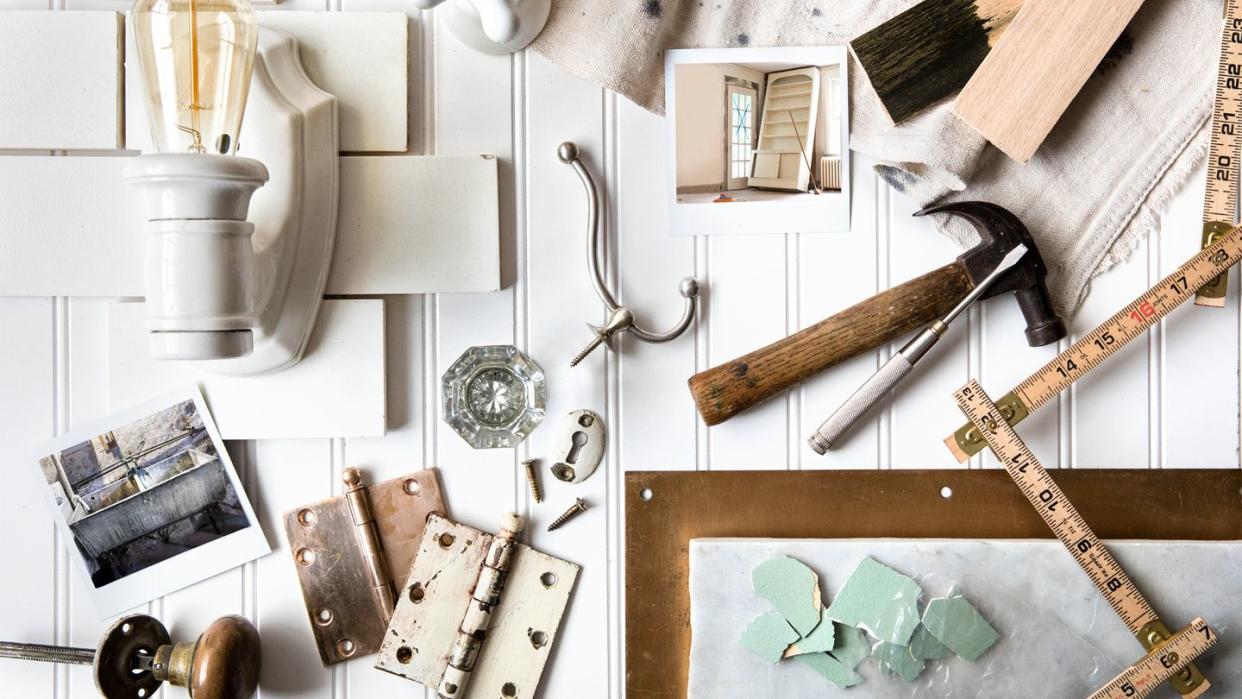
It can be a rocky road to your dream home. You've got to navigate the ups and downs of the real estate market, keep your eyes peeled for new listings, zoom from one prospect to the next, evade escalating bids and all-cash offers, and—after all that—compromise on your list of must-haves. At some point, you have to wonder if the more practical route is to build your own house from scratch. It has to be cheaper and less stressful, right? How much does it cost to build a house in total?
According to Home Advisor, the average cost to build a house in 2023 was $293,542, which is just over half the median U.S. home sale price in 2022: approximately $450,000. However, the cost of building a home is wildly subjective, and Home Advisor says that average can range from $108,715 to $462,529—with variability from state to state.
We wanted more detail, so we reached out Paul Emrath, vice president of surveys and housing policy research for The National Association of Home Builders. He agreed in general, but with a caveat. "Newer homes offer several advantages such as lower operating costs (particularly lower utility and maintenance costs) that affect the total cost of owning a home," he says. "The lower operating costs mean that a home buyer can pay 36 percent more for a new home and achieve the same first-year cost compared to buying a home built before 1960."
Below, we’ve outlined many of the primary budget categories, along with the pesky little things that cost more than you might expect. Unfortunately, a dumpster is a separate line item.

Construction Costs
We priced out all the pieces of a new house—including some sneaky ones you might not have considered, like clearing trees to make way for it and getting hooked up to electricity.
House Plans
Unless you're drafting the architectural plans yourself, you're going to need to commission or buy a house plan. Based on our online browsing, stock plans cost a few hundred dollars up to around $1,000—much less than custom plans, which require you to hire an architect, who may charge a fee for the project or per square foot.
Land and Site Prep
Home Advisor didn't factor this expense in, but it's nonnegotiable. The cost will vary based on where you live, but on average people spend $20,000 to $200,000 on land.
It's also important to consider whether the lot is finished (hooked up to the electrical grid, plumbing, and water lines) or unfinished (a blank plot with no permitting or existing hookups). If you're working on an unfinished lot, you have to request access to municipal systems. Depending on how far you live from the closest lines, electrical grid installation costs $1,000 to $30,000—a wide range. If you opt for solar panels, those will be installed at the end of the building process, and a starter set of new solar panels will run you around $20,000. Water and sewage hookups cost $550 to $5,000.
Contractor Fees
Consider a general contractor your project manager. If you don't have home-building experience, you'll probably want one. They typically charge on a per-project basis, and you can expect to pay your contractor about 10 percent of your total budget. That doesn't include what you'll owe their crew or subcontractors. If you're working with an architect or interior designer, they'll charge their own fees as well.
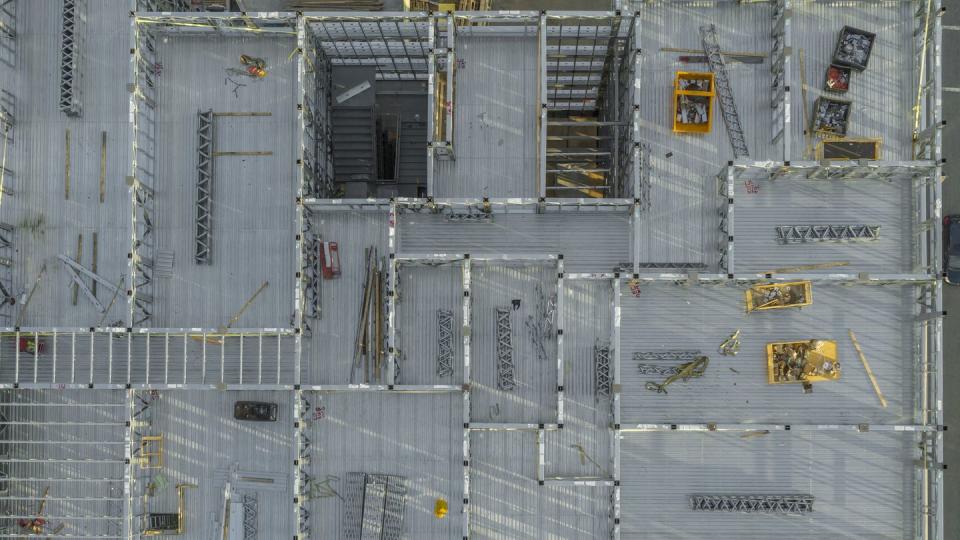
Foundation
Pouring a concrete foundation (aka slab) costs between $5,000 and $40,000, depending on your home's square footage. An average size home's foundation costs around $10,000. You can expect prices between $5 and $12 per square foot.
Systems
Electrical, plumbing, and heating and air-conditioning (HVAC) systems are three of the biggest line items in your construction budget. Expect to spend around $25,000 for electrical, $11,000 for plumbing, and between $1,500 and $13,000 for HVAC.
Framing
The expense of framing depends on how large and how many stories your dream home is. For a 1,000-square-foot home, the average framing cost is between $7,000 and $16,000, or $7 to $16 per square foot. That goes up if you have multiple stories or a large garage.
Raw Materials
This is by far the most expensive part of the building process for most people. Materials, from lumber to shingles, make up around 50 percent of your total budget.
Lumber
Lumber makes up the majority of your raw materials budget. The nationwide average for lumber costs is $25,000 to $65,000, according to Home Advisor.
Trusses
Trusses are the wood beams that support your roof. A new set of roof trusses for a 2,000-square-foot house costs an average of $7,500 to $12,000, according to This Old House.
Insulation
Insulation keeps your home warm in the winter and cool in the summer—and your energy bills down all year. You can choose from a number of options, according to Insulation Guides. Batting is the easiest to DIY, radiant barriers are good at reflecting heat, and spray foam is ideal for insulating an already finished area. Blanket rolls of insulation will run you from $0.10 to $1 per square foot, whereas spray foam insulation costs approximately $1.50 to $3.80 per square foot.
Drywall
A whole home's worth of drywall costs $5,000 to $30,000 on average for a larger or multistory house. There are actually six common types of drywall, not just one that fits all. Fireproof, soundproof, and mold-resistant drywall costs slightly more than traditional whiteboard drywall due to its specialized construction. There's also plasterboard (the ideal base for plaster or lime wash thanks to its highly absorbent materials), and VOC-absorbing drywall, which captures and traps chemicals and other VOCs (like those found in some paints).
Exterior
Whether you opt for brick, wood, composite, vinyl, stone, or stucco, the exterior material you choose reflects your personality and your neighborhood. While the total finishing cost has a national average of $6,000 to $100,000 (a very wide range), it hinges on the material you choose. According to Today's Homeowner, stone veneer is the most expensive at $20 to $50 per square foot, while vinyl siding sits at the other end of the spectrum at $1 to $8 per square foot. Stucco and brick veneer are both in the middle with a price range of $3 to $6 and $5 to $20 per square foot, respectively.
It's important to consider the ongoing maintenance costs of your home's exterior too. Brick and composite siding require little to no maintenance, while stucco and wood siding require regular painting and upkeep.
Roofing and Gutters
Roofing and gutter installation will run new homebuilders around $12,000 depending on the size, material, and slope. A standard shingled roof costs less than cedar or ceramic tile. Metal gutters cost more than plastic, but they're more durable in heavy storms and ice.
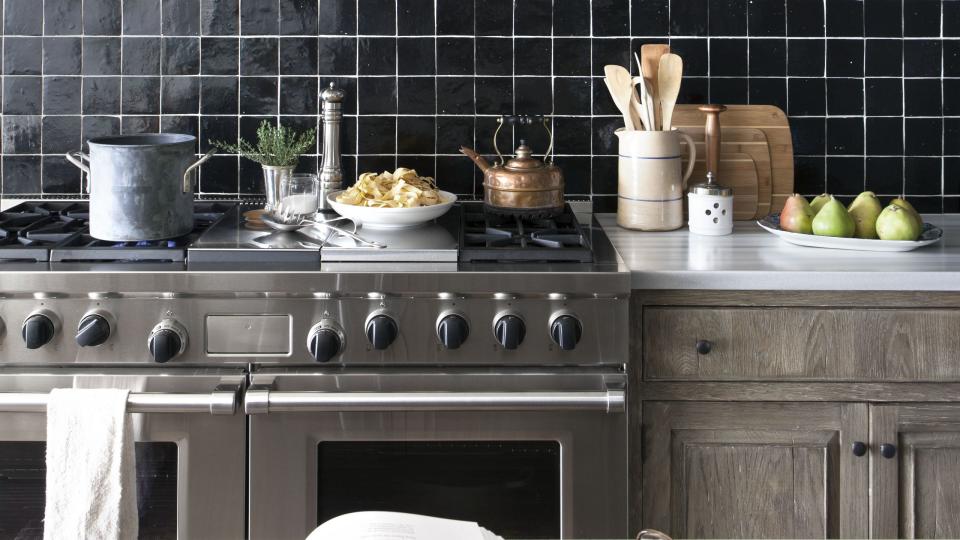
Finishings
This is an area where you can save some money with your aesthetic choices. You might be surprised how big a price difference there is between types of toilets, for instance.
Windows and Doors
Expect to spend $5,000 to $10,000 on windows and doors for your new home. Storm windows and storm doors cost more—an average of $200 per window and between $100 and $450 for a storm door. Double-hung, bay, and custom windows are much more expensive. You can also choose triple-paned ultra-insulated windows, which can save you money on your utility bills but cost more upfront than standard double-paned windows.
Plumbing Fixtures and Lighting
Pumping fixtures and lighting range in price from $2,000 to $12,000. This range depends on how many bathrooms your home has as well as how many installed electrical fixtures (as opposed to plug-in lamps and sconces) you plan to have. This range includes toilets, showers, and bathtubs but not custom lighting pieces.
Cabinetry and Counters
You could spend as little as $2,000 or as much as $30,000 (or more). Your cabinetry and countertops spend is highly dependent on whether you opt for big-box products (like an IKEA kitchen) or custom cabinetry and counters. Granite or soapstone counters cost less than marble or quartz. The options are practically endless.
Flooring and Tile
This is another area where you can curb costs or spend on premium materials. The number of options—vinyl, linoleum, hardwood, tile, custom tile, stone, and more—explains why the average cost of flooring ranges so widely, from $10,000 to $35,000. Vinyl and laminate cost the least, while real hardwood and custom tile cost the most.
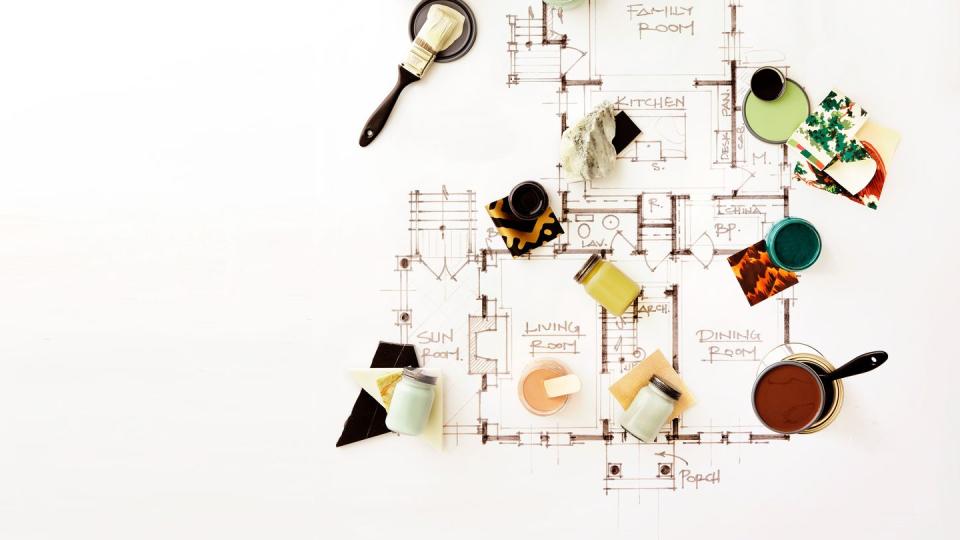
Paint
One of the easiest steps to DIY (and overlook), paint is an easy to place to save. If you opt for professional painters, a whole home interior will cost between $4,000 and $11,000 on average, depending on the size of your home. Exterior paint costs slightly less, with a range of $2,000 to $8,000.
Appliances
The basics include a dishwasher, range, microwave, refrigerator, washing machine, and dryer. You might want multiple fridges or laundry sets, or mini versions in convenient areas. A whole-home appliance package runs $3,000 to $15,000 on average for off-the-shelf appliances. Custom pieces can cost five (or even six) figures each.
Landscaping
You can move in without landscaping, so many homebuilders forget to allot funds for it. But it's a necessary finishing touch, not just for beauty but to keep your lot from turning into a mud pit every time it rains. The national average is around $7,600 for outdoor spaces. If you're planning on putting in a swimming pool or above-ground pool, outdoor kitchen, or extensive decking, it can skyrocket quickly.
Irrigation
Whether you're in need of a sprinkler system for your lawn or a watering system for your vegetable garden, in-ground irrigation is a common home-building expense. The national average is between $2,400 and $4,200, including equipment and labor.
Paving
Many parts of the country require paved walkways and driveways. For a standard asphalt driveway, expect to spend $7 to $13 per square foot. However, gravel is much cheaper at $1 to $3 per square foot, and pavers are much more expensive at $10 to $30 per square foot.
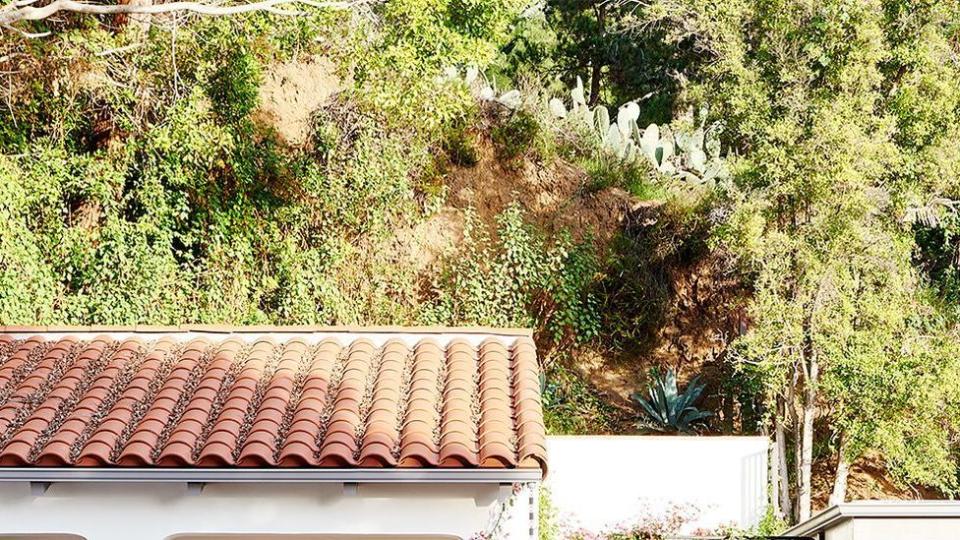
Generators
Installing a whole home generator right off the bat can be a great way to make sure you're prepared for anything and your new home is protected in event of a power outage or serious weather event. The average all-in cost for a home generator system is between $1,471 and $8,340, with homeowners spending $4,906 on average.
Hidden Costs
Unfortunately, you need to factor these not-so-little expenses into your home-building budget.
City Permits
Before you break ground, you’ll have to present your plans and request a building permit from your municipality. There's an application fee, which varies from one city and state to the next, and it’s usually a set cost per finished value. From there, the permit will cost between $1,200 and $2,000, also depending on your area.
Temporary Electrical
To power construction tools, floodlights, and other equipment, you'll need a temporary power source. It costs around $1,000 for an electrician to come out and install the utility pole and hook it up. Usage costs vary, but $1,200 to $2,850 is an average total.
Portable Toilets
Inexpensive and necessary, a portable toilet costs $75 to $100 per month, including a weekly maintenance visit.
Dumpsters
Yes, this one really stinks. The national average for renting a 10-yard dumpster is around $500 per week. They're required for most construction sites. Be sure to account for potential building delays, and schedule extra emptying days during construction.
Temporary Lodgings
Whether your lease is up or you've already sold your previous home, you probably need to factor rent into your building budget. You'll need somewhere to live while construction is going on. Depending on your area, a rental home or apartment will run you at least $1,000 per month, thanks to soaring rents nationwide.
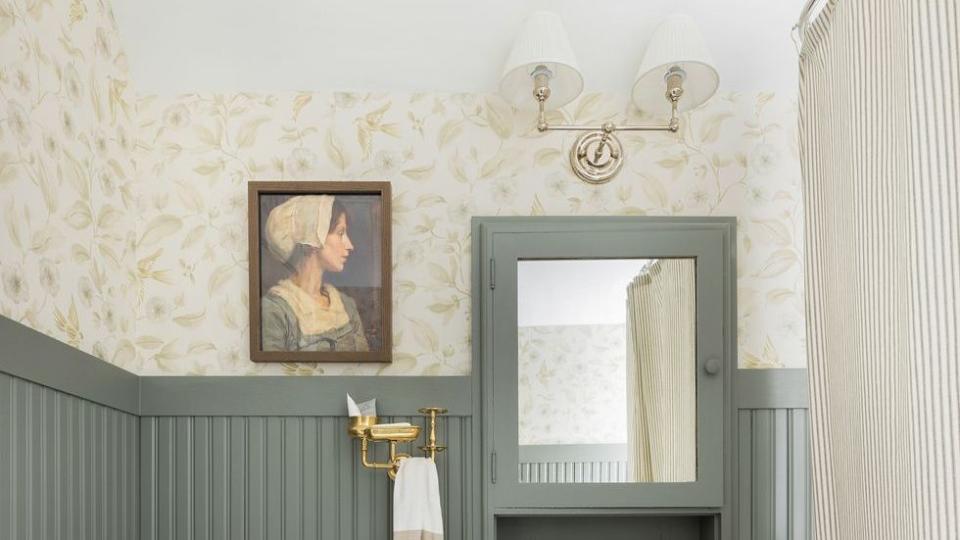
Money Savers
Building a home from the ground up is no small feat. Save money in both the short term, and long term, with these helpful hints.
Build Up Instead of Out
A simple way to cut down on land costs is to consider vertical square footage rather than horizontal square footage. A smaller lot typically costs less than a larger one in a similar location, depending on the topography. You could build a two-story home with the same square footage as your one-story dream home and invest that money elsewhere.
DIY What You Can
While we recommend leaving structural tasks like pouring the foundation and installing the electrical wiring to professionals, there are several costly tasks you can DIY. Interior painting and landscaping take time and can be tedious, but they're totally doable. Plus, you’ll have a fun conversation starter to share during your housewarming party.
Build a Forever Home
Rather than build the home you want now, you should be thinking about where you need to live in the future. If you plan to stay put forever, you can save money on future renovation costs by outfitting your home for accessibility now. Plus, this ensures that any elderly or disabled relatives and friends can visit and navigate your home with ease.
You Might Also Like

